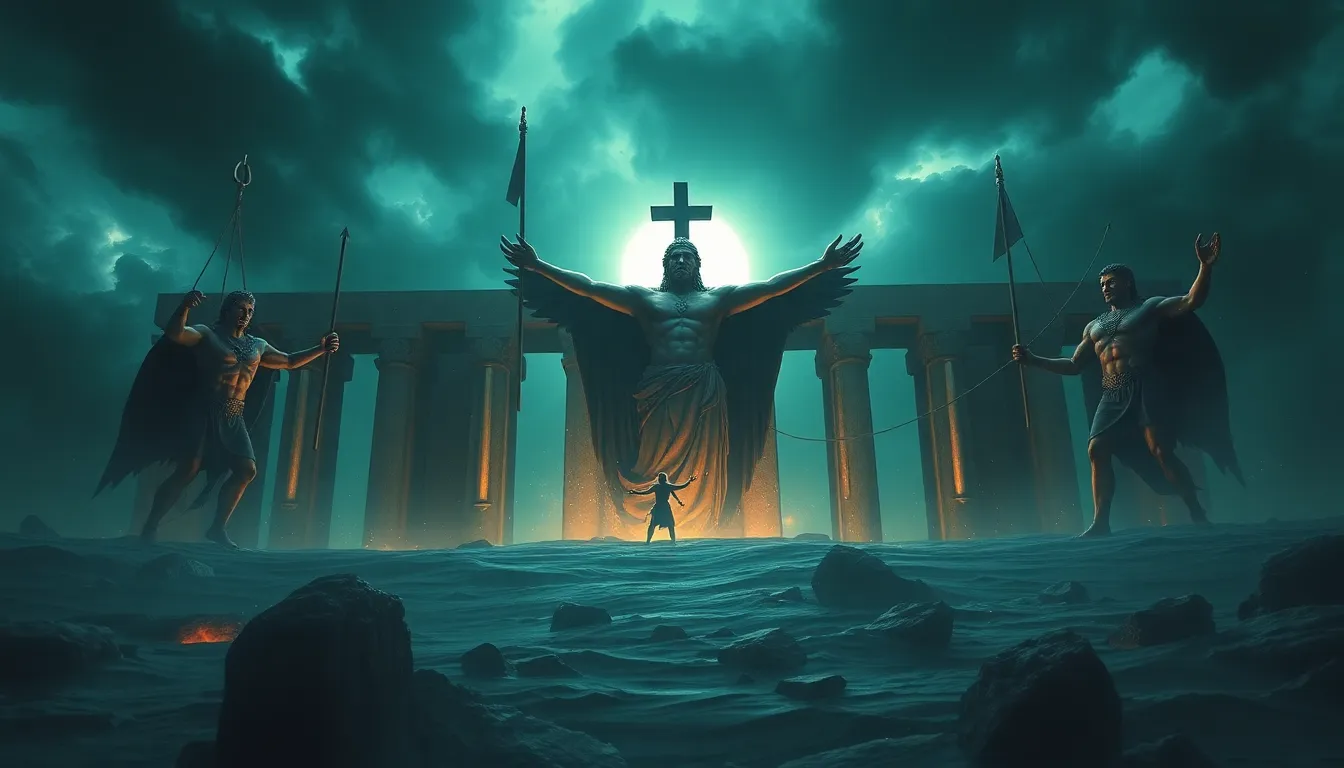The End is Nigh: Myths That Have Shaped Our Destiny
Introduction: The Allure of Apocalyptic Myths
Throughout history, apocalyptic myths have captivated human imagination, stirring emotions ranging from fear to fascination. These narratives often depict scenarios of destruction and rebirth, resonating deeply within cultural and psychological frameworks. The allure of the end times is not merely a reflection of our dread of mortality; it is also a mirror of societal anxieties and collective hopes for transformation.
Psychological factors such as existential uncertainty, the search for meaning, and a desire for control over the unknown contribute to the persistence of these myths. Moreover, cultural touchstones shape how societies interpret signs of impending doom, blending tradition with contemporary fears.
Historical Context: The Roots of End-Time Narratives
Apocalyptic beliefs can be traced back to ancient civilizations. The Sumerians, for instance, had myths that foretold cycles of destruction and renewal, reflecting their understanding of life’s temporality. Similarly, the Maya civilization produced intricate calendars that some interpreted as predictions of cataclysmic events.
Significant historical events have often been viewed through an apocalyptic lens. For example, the fall of the Roman Empire was seen by many as a precursor to a darker age, while the Black Death in the 14th century led to widespread panic and apocalyptic fervor in Europe.
Religious Influences: Scriptural Prophecies and Their Impact
Major religious texts have played a crucial role in shaping apocalyptic narratives. The Christian book of Revelation, with its vivid imagery of the apocalypse, has inspired countless interpretations and movements over the centuries. Similarly, Islamic Hadith contains prophecies about the end times that have resonated within Islamic communities.
The influence of these religious texts extends beyond spirituality; they often shape societal views on morality and destiny. Believers may perceive current events as fulfillments of prophetic visions, heightening their urgency and relevance.
Cultural Reflections: Apocalyptic Myths in Literature and Art
Literature and art serve as powerful mediums through which apocalyptic myths are expressed and explored. Works such as Cormac McCarthy’s “The Road” and the film “The Book of Eli” present post-apocalyptic worlds that challenge characters to navigate moral dilemmas amidst desolation.
- “The Road”: A haunting narrative that explores themes of survival and human connection in a devastated world.
- “The Book of Eli”: A film that emphasizes faith and perseverance amidst societal collapse.
These narratives not only entertain but also provoke thought about human resilience and the ethical questions that arise in extreme circumstances. Their impact on public consciousness can be profound, often influencing behavior and societal norms.
Modern-Day Interpretations: Apocalyptic Myths in the Digital Age
In the digital age, apocalyptic themes have experienced a resurgence, permeating social media, films, and video games. Platforms like Twitter and Reddit amplify fears about the end of the world, allowing ideas to spread rapidly.
Popular movies and video games often feature apocalyptic scenarios, reflecting societal anxieties about technology, climate change, and geopolitical tensions. This modern portrayal of apocalyptic myths not only entertains but also reinforces fears and belief systems surrounding the end of times.
Psychological Perspectives: The Mindset Behind End-Time Beliefs
Psychology offers insights into why humans are drawn to apocalyptic thinking. Factors such as fear, uncertainty, and existential dread often prompt individuals to seek explanations for the chaos around them.
- Fear of the Unknown: Apocalyptic myths provide a narrative structure that offers clarity in an uncertain world.
- Existential Dread: These myths confront individuals with the ultimate questions of existence, prompting reflection on life and mortality.
The psychological appeal of these narratives can lead to a cycle of belief, where fear and uncertainty reinforce the desire for answers, often found in apocalyptic scenarios.
The Role of Science: Environmental and Technological Catastrophes
Scientific discourse has increasingly highlighted fears surrounding climate change, nuclear threats, and pandemics. These real-world concerns often mirror apocalyptic narratives, blurring the lines between myth and reality.
For instance, climate change has been depicted in popular media as a gradual apocalypse, leading to widespread anxiety about the future of the planet. This intersection of science and apocalyptic myth can both inform and exacerbate public fears.
Sociopolitical Dimensions: End Times and Social Movements
Apocalyptic beliefs have inspired numerous political actions and social movements. For example, climate activism often frames environmental degradation as an existential threat, urging immediate action to prevent catastrophe.
- Climate Activism: Movements like Extinction Rebellion emphasize the urgency of addressing climate change, often invoking apocalyptic imagery in their messaging.
- Survivalism: Some groups prepare for potential disastrous scenarios, reflecting deep-seated beliefs in impending doom.
The intersection of myth and ideology shapes collective action, driving home the point that apocalyptic beliefs can mobilize societies toward specific goals.
Case Studies: Notable End-Time Predictions and Their Outcomes
Throughout history, there have been several notable predictions regarding the end of the world. For instance, the Y2K bug caused widespread panic as people feared a global technological collapse. Similarly, the Mayan Calendar predicted the end of the world in 2012, sparking significant media attention and public concern.
The fallout from these predictions often leads to disillusionment. Failed predictions can erode trust in belief systems and institutions, prompting individuals to reassess their views on apocalyptic narratives.
Conclusion: The End of Myths or a New Beginning?
As we reflect on the enduring nature of apocalyptic myths, it becomes evident that they are not merely relics of the past but evolving narratives that continue to shape our understanding of destiny and morality. In an age marked by uncertainty, these myths provide frameworks for grappling with existential fears and societal anxieties.
Whether they signal the end of traditional beliefs or herald new beginnings, the allure of apocalyptic narratives remains strong. They challenge us to confront our deepest fears and aspirations, ultimately prompting us to ponder what lies beyond the horizon of human experience.



